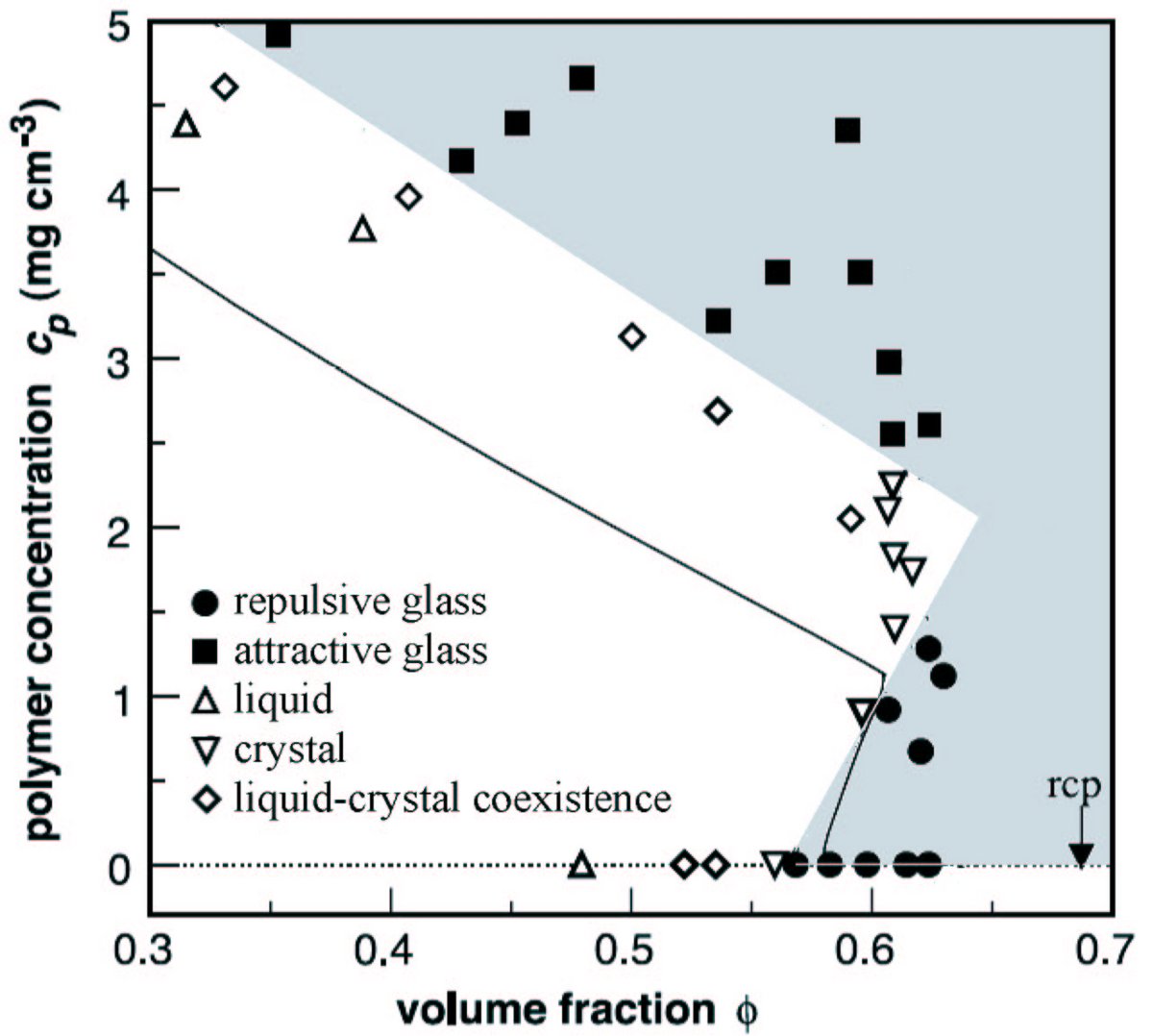Multiple glassy states in colloidal dispersions

Colloidal particles (viz. sub-micrometer sized particles) dissolved in a liquid exhibit phase diagrams familiar from molecular systems. Yet, often they form metastable states which are very long lived and suppress relaxation into thermal equilibrium. The figure on the right shows the states diagram of a dense solution of spherical particles where addition of polymers induces a short ranged attraction. The volume fraction measures the volume taken by the particles relative to the total volume, and rcp marks ‘random close packing’. Polymer concentration cp measures the strength of the attraction, which has a range of approx. 8% of the particle diameter; thus plays the role of an inverse temperature. While equilibrium phases are observed in the non-shaded regions in the figure, states in the shaded regions are stuck in metastable gel and glass states for weeks or even longer. Because of their excessively large viscosity, processing and handling of these states proves impossible. Our prediction of two different glassy states, one driven by steric hindrance, the other by attraction, of glass-to-glass transitions, and of a region where increase of the attractions (equivalent to lowering the temperature) melts the glass, had been unexpected. Its verification in the shown experiments from Edinburgh has opened the route to tailoring metastable states by tuning the local fluid packing (called ‘cage effect’).
Amann, C.P. and M. Fuchs. Transient stress evolution in repulsion and attraction dominate glasses. Journal of Rheol., 58, 1191 (2014)
Pham, K.N., A.M. Puertas, J. Bergenholtz, S.U. Egelhaaf, A. Moussaïd, P.N. Pusey, A.B. Schofield, M.E. Cates, M. Fuchs and W.C.K. Poon. Multiple Glassy States in a Simple Model System. Science, 296, 104–106 (2002)
Dawson, K., G. Foffi, M. Fuchs, W. Götze, F. Sciortino, M. Sperl, P. Tartaglia, T. Voigtmann and E. Zaccarelli. Higher-order glass-transition singularities in colloidal systems with attractive interactions. Physical Review E, 63, 011401 (2001)
